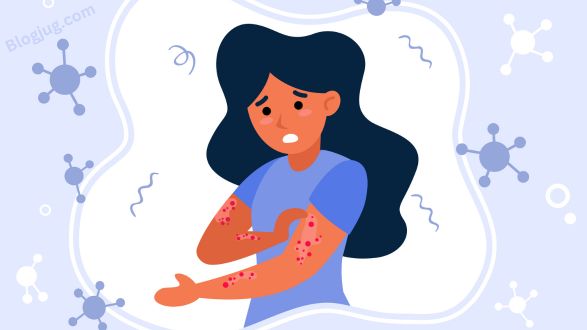
Overview
What is smallpox?
A dangerous and frequently fatal viral infection is smallpox. It can leave a person permanently scarred and is contagious, meaning it spreads from person to person. It can sometimes result in deformity.
Although smallpox has harmed people for thousands of years, vaccinations against the disease allowed it to be eradicated globally by 1980. The world no longer contains it organically. Reports of smallpox occurring last case ended in 1977.
For scientific objectives, smallpox virus samples have been preserved. Furthermore, advancements in science have made it feasible to produce smallpox in a lab. This has raised worries that smallpox might be employed as a bioweapon in the future.
Although vaccinations can prevent smallpox, routine immunization is not advised because most people are unlikely to contract smallpox spontaneously. Patients who contract smallpox may benefit from treatment with novel antiviral drugs.
What are the symptoms of smallpox?
The earliest signs of smallpox typically show up 12 to 14 days after the virus is first encountered. But before you seem or feel ill, the virus may have been in your body for 7 to 19 days. This time frame is referred to as the “incubation period”.
Flu-like symptoms appear suddenly following the incubation period. These include:
1. Headache.
2. Fever.
3. Muscle aches.
4. Severe back pain.
5. Vomiting, sometimes.
6. Severe fatigue.
The body begins to show flat, crimson dots a few days later. They could begin on the tongue and in the mouth before moving to the skin. Usually, the chest, hands, and feet are damaged after the face, arms, and legs.
Many of the spots develop into little blisters filled with clear fluid in a day or two. The blisters later fill with pus. Pustules are the name for these lesions. 8 or 9 days later, scabs appear and eventually break off, leaving behind deeply pitted scars.
Until the scabs break off, the smallpox rash can transmit from person to person.
What are the causes of smallpox?
The variola virus is the cause of smallpox. The virus may spread as follows:
1. Directly from person to person: The smallpox virus can spread through contact with an infected person. When an infected individual coughs, sneezes, or speaks, the virus might be shared. Smallpox can also occur as a result of skin sore contact.
2. Indirectly from an infected person: Rarely, smallpox can travel via the air within structures and infect others in adjacent rooms or floors.
3. Through contaminated items: Additionally, coming into contact with contaminated bedding and clothing might transmit smallpox.However, this method of contracting smallpox is less common.
4. As a terrorist weapon, potentially: It is improbable that smallpox will be used as a weapon. However, countries are bracing for the prospect that releasing the virus might quickly spread the disease.
Complications
The majority of smallpox patients recover. Certain uncommon varieties of smallpox, however, are nearly invariably fatal. Pregnant women and toddlers are most commonly affected by these more severe types.
Those who recover from smallpox typically have quite noticeable scars, particularly on the arms, legs, and face. Smallpox can occasionally result in blindness.
Prevention
In the event of an outbreak, infected individuals would be segregated in an effort to contain the virus. A smallpox vaccination was required for everybody who had come into touch with an infected person. A vaccination can prevent smallpox from occurring or lessen its effects if it does. The vaccination should be administered either one week prior to or following viral exposure.
Two vaccines are available:
1. ACAM2000 uses a live virus similar to smallpox but with less side effects. Serious adverse effects, like infections of the brain or heart, are occasionally possible. This is the reason not everyone receives the vaccination. For most people, the hazards of the vaccine outweigh the benefits—that is, unless there is an outbreak of smallpox.
2. ACAM2000 is not as safe as the second vaccination, Jynneos, which uses a much-reduced form of the virus. It can be utilized by those with skin conditions or weakened immune systems who are unable to take ACAM2000.
Vaccines against smallpox also offer defense against other related viral illnesses such as cowpox and pox, commonly known as monkeypox.
People vaccinated as children
You have some defense against the smallpox virus if you had the vaccination as a youngster. Following smallpox vaccination, immunity can either be full or partial for up to ten years, or twenty years with booster shots. People who received vaccinations as children would probably receive another shot if there was an outbreak and they came into contact with the virus.









3 thoughts on “Smallpox: Causes, Symptoms, and Prevention”